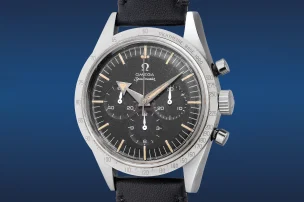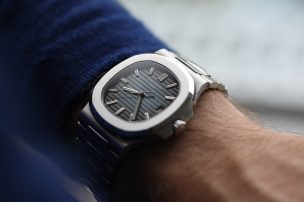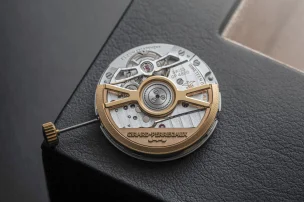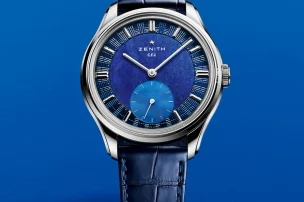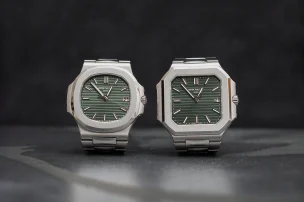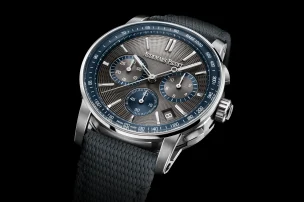
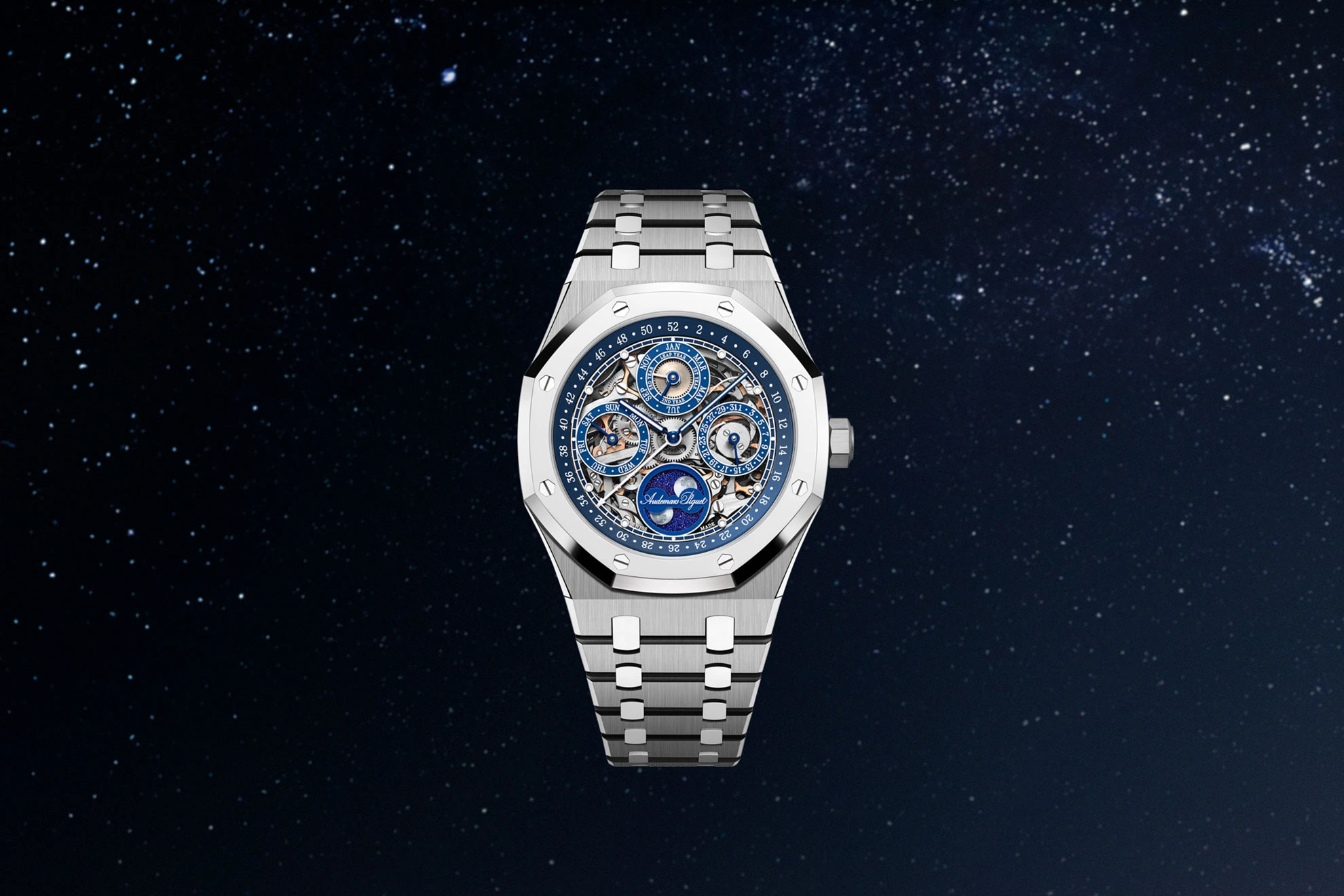
Audemars Piguet Bids Farewell To Its Calibre 5135 With The Royal Oak Perpetual Calendar Squelette ‘150th Anniversary’
Audemars Piguet is not only celebrating its 150th anniversary this year, but also bidding farewell to the calibre 5135 after almost a decade in production. However, this special automatic movement with perpetual calendar is not simply disappearing without a trace. Rather, it is being produced one the last time, as it shows off its best side in the open-worked, limited edition Royal Oak Perpetual Calendar Squelette ‘150th Anniversary’. The model embodies several brand milestones and testifies to Audemars Piguet’s expertise as a master of complications. We take a look back at the historical inspiration for this model before taking a closer look at the titanium and BMG model, too.
Inspired by the past
The Royal Oak Perpetual Calendar Squelette ‘150th Anniversary’ embodies numerous Audemars Piguet milestones through its design elements and calibre, which represent strong references to history. The very combination of the iconic Royal Oak with Audemars Piguet’s watchmaking speciality – the perpetual calendar – has a historically significant origin for the brand.
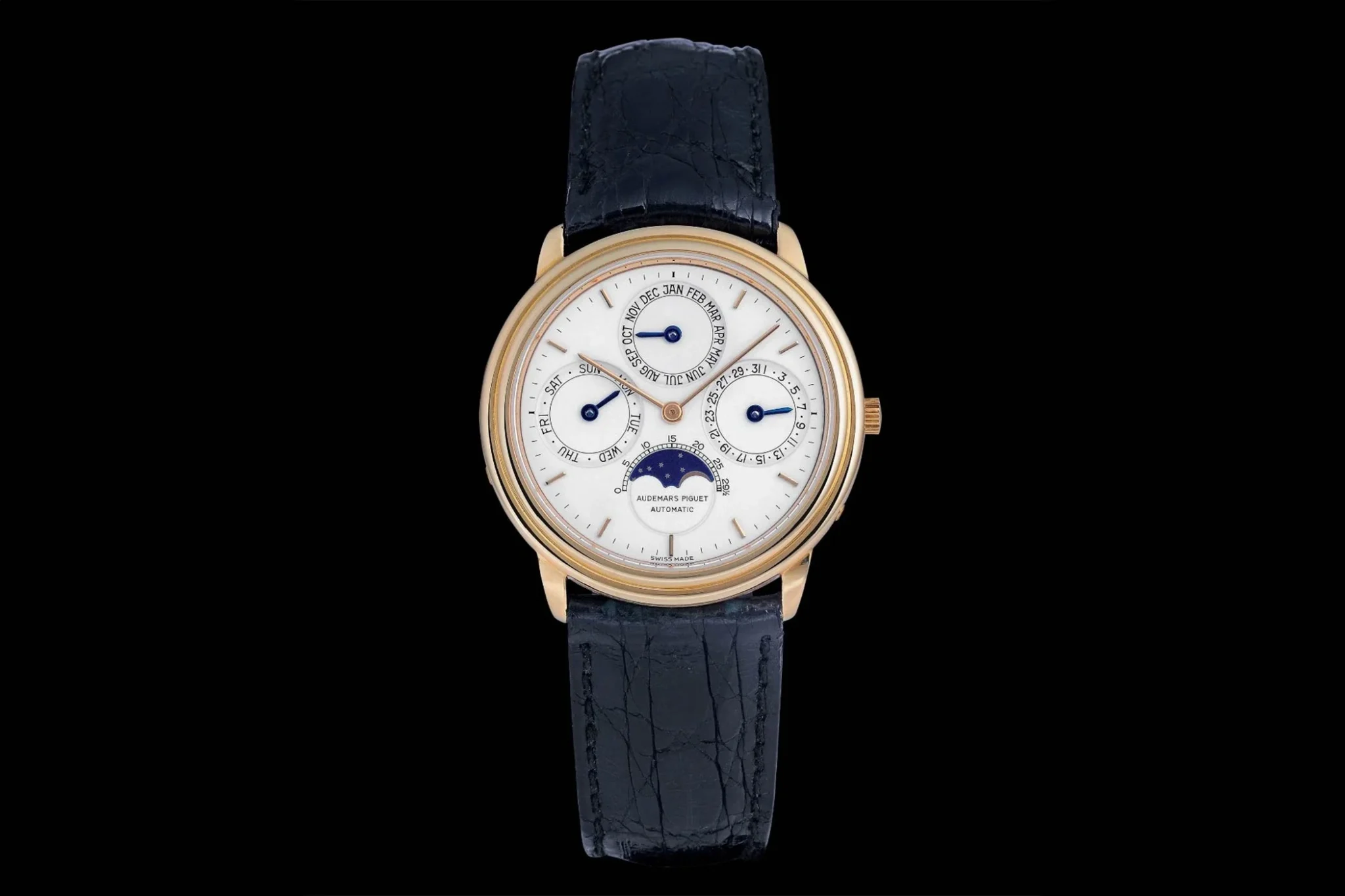
The innovative Audemars Piguet model 5548BA with a perpetual calendar from 1978.
In 1978, at the height of the quartz crisis, the watch manufacture launched a ground-breaking innovation on the market that emphasised the importance of mechanical watchmaking and its spirit of technical innovation: the thinnest wristwatch at the time with a perpetual calendar and self-winding mechanism. Considering that the perpetual calendar is one of the supreme disciplines of complications, it is an astonishing feat to pack so many functions into a movement just 3.95 mm high. The automatic marvel calibre 2120/2800 was developed by Michel Rocha, Jean-Daniel Golay and Wilfred Berney, and around 7,000 of them were produced and sold until around 1996. More than 2,000 of the original innovative model 5548 alone, which was designed by Jacqueline Dimier, were produced.
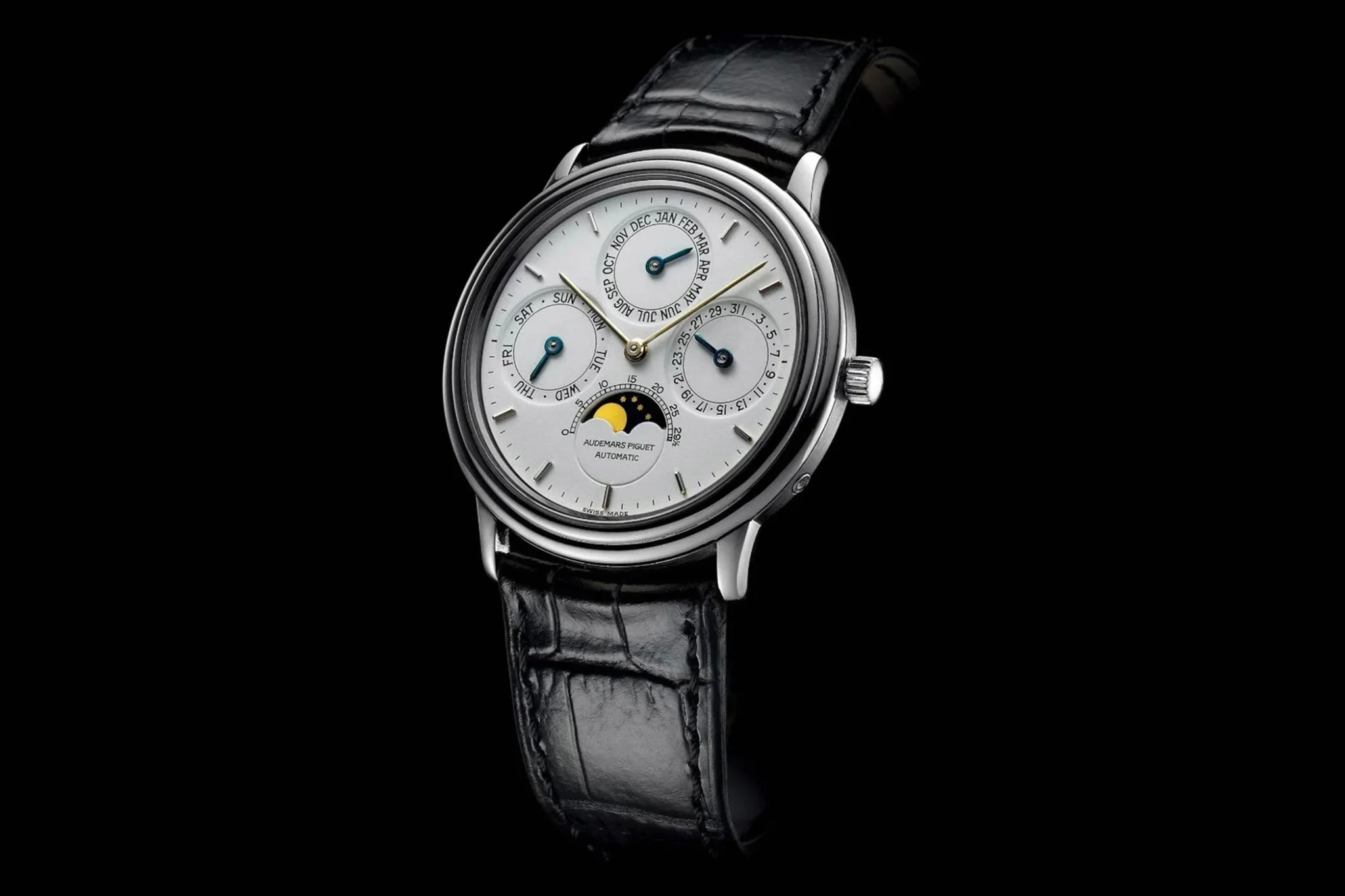
Royal Oak model 25554 from 1984
However, the year 1984 is significant for the background of our anniversary model, as the calibre 2120/2800 celebrated its entry into the Royal Oak collection with the model Ref. 25554. It is a combination that unites Audemars Piguet’s tradition of ultra-thin calibres (firmly in the manufacture’s repertoire since the beginning of the 20th century) and perpetual calendars with the forward-looking design of the Royal Oak. According to the Audemars Piguet archives, the impetus for the Royal Oak Perpetual Calendar likely came from the USA, as a document including a draft from 1981 demonstrates. This idea led to unexpected success, as timepieces with a perpetual calendar were rarely produced in series at the time; within 10 years of the launch of the first model, 12 further creations came onto the market and 1,746 units were produced.
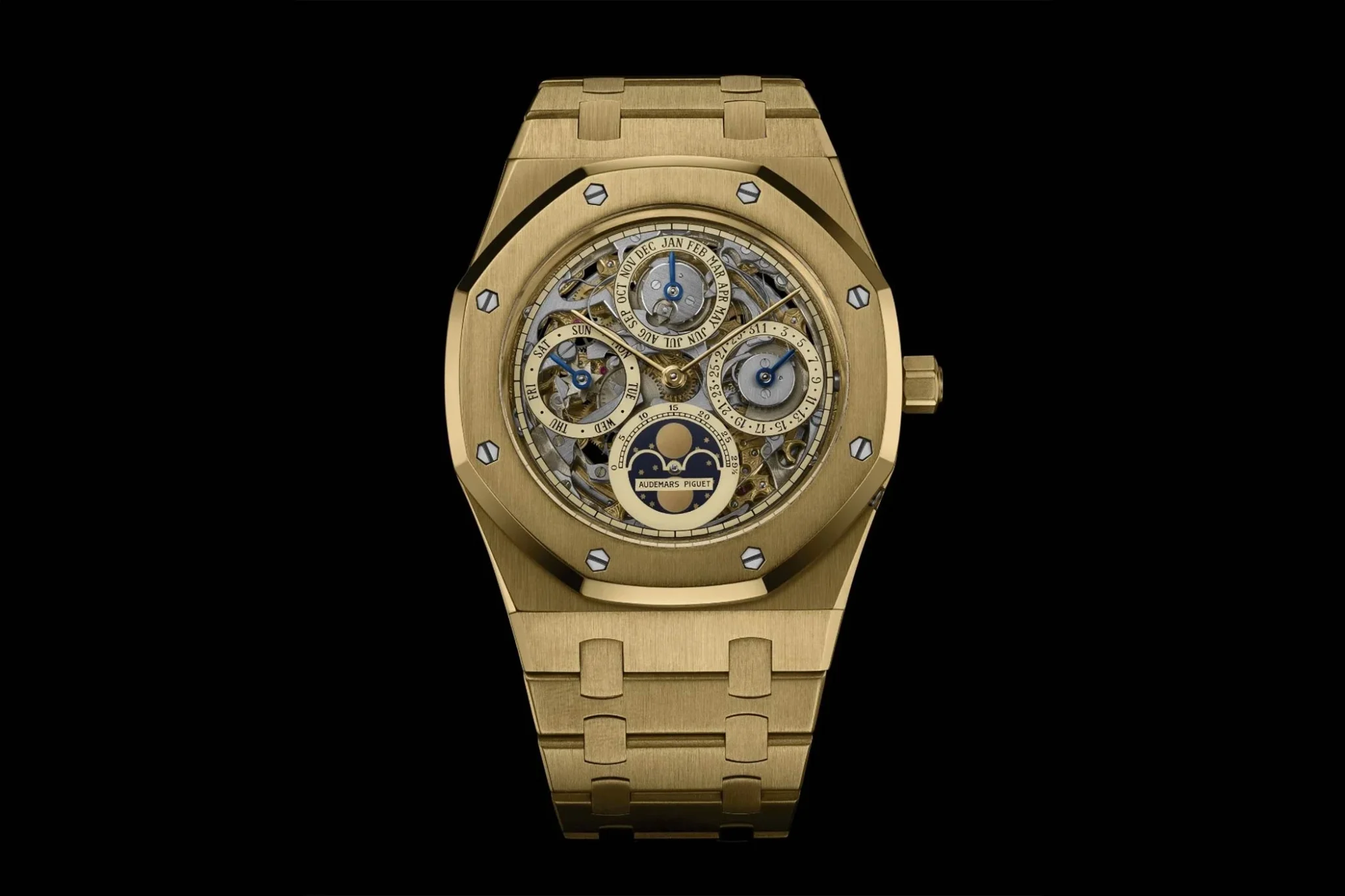
Royal Oak Perpetual Calendar 25636BA no. 108 from 1991
In 1986, the calibre could finally be admired in an open-worked Royal Oak (Ref. 25636). Presented in yellow gold, the timepiece was the first skeletonised Royal Oak with a perpetual calendar. The art of skeletonisation was used to showcase the craftsmanship that, in this case, involved more than 200 hours of work in such a complicated movement, making it even more impressive and setting an example at a time when quartz watches dominated the market.
With its aesthetics and mature mechanical core, the Royal Oak Perpetual Calendar Squelette ‘150th Anniversary’ now symbolises the result of decades of development and celebrates the calibre 5135 one last time, in all its glory.
Royal Oak Perpetual Calendar Squelette ‘150th Anniversary’: Case
During the 150 years since its foundation, the watch manufacture has produced numerous innovations and also has a lot to show in the field of material development. Of course, the Royal Oak Perpetual Calendar Squelette ‘150th Anniversary’ is centred around the movement, but the choice of materials for the case also reflects a piece of the brand’s history. The 41 mm case with a height of 9.9 mm is made from a combination of titanium and Bulk Metallic Glass (BMG). The latter is a glass-like material that was discovered in the 1960s and is used today in golf, for example. The BMG used for the bezel and case back of our model was specially developed by Audemars Piguet and consists of more than 50 percent palladium. This makes the BMG extremely corrosion-resistant despite its shimmering appearance, which is particularly favourable for scratch-prone surfaces such as the bezel.

The highly polished BMG is complemented by the lightness of the satin-finished titanium that makes up the rest of the case with its polished bevelled edges. The different surface textures create an impressive interplay of light, adding depth to what at first glance appears to be a rather uniform case. Incidentally, the combination of titanium and BMG is a material that was first used in 2021 for Only Watch in the Royal Oak ‘Jumbo’ Extra Flat (Ref. 15202XT) and was only used the previous year for the Royal Oak Perpetual Calendar (model 26585XT).
The aesthetics of the case are rounded off by an integrated bracelet with titanium links and BMG bars as well as a three-part folding clasp made of titanium. The case of the anniversary model also has a screw-down titanium crown and is water-resistant up to 20 metres.
Vintage-style dial
To allow the calibre to show itself in all its glory, the dial is open and the timepiece is fitted with an anti-reflective sapphire crystal caseback. Here too, Audemars Piguet has returned to its historical roots and modelled the design of the Royal Oak Perpetual Calendar Squelette ‘150th Anniversary’ on a pocket watch (Ref. 25729) from 1992 on display at the Musée Atelier Audemars Piguet. In this model with a perpetual calendar, the movement is also clearly in focus thanks to an open dial and can be admired both from the front and through the open caseback.
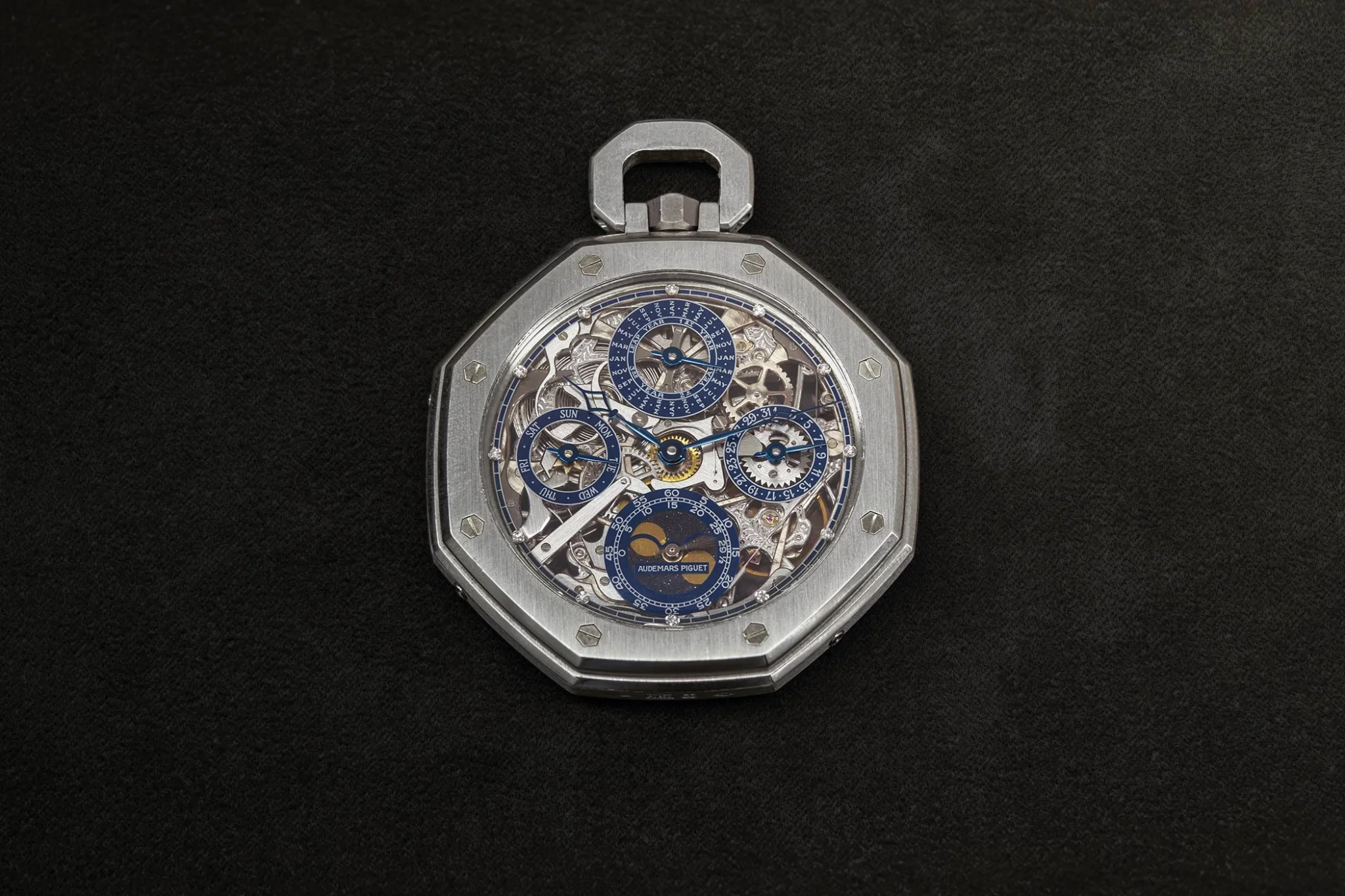
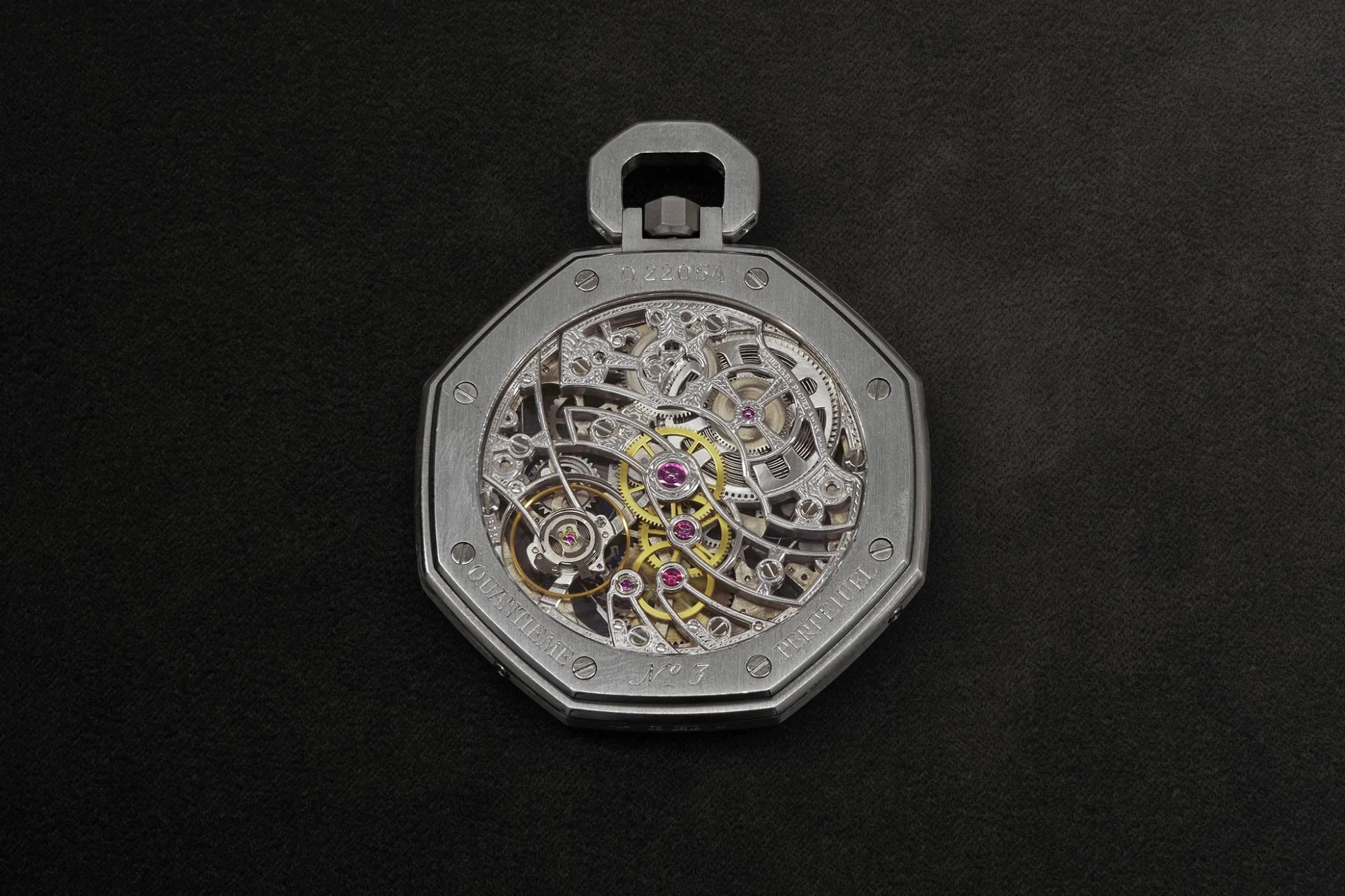
The design elements of the dial on both models are in a rich blue hue. The blue brass inner bezel with markings for the 52-week display and the four counter rings, which appear to float above the movement, echo the aesthetics of the vintage model in terms of colour. However, the blue tone of the anniversary edition is slightly darker than that of the pocket watch so that it harmonises better in colour with the ‘bathtub’ hands for the hours and minutes. These are made of 18K white gold and are coated with a luminous material for better legibility in poor lighting conditions. Based on the indexes of the historic timepiece made of brilliant-cut diamonds, the silver-grey indexes placed along the railway minute track are circular. In addition, the white lettering for the numerical and alphabetical indications of the calendar has been reworked to lend the dial even more grace.

Accessing every function at a glance
Let us now turn to the perpetual calendar display on the dial. At 12 o’clock is the counter ring with the months and a display for the leap year. While the days of the week are shown at 9 o’clock, the date can be seen at 3 o’clock. The moonphase display, on the other hand, is at 6 o’clock. Behind the lettering of the brand’s name, which has been written in historical documents, there is a dial opening through which the eight different phases of the 29.5-day lunar cycle are shown. The special thing about this is that Audemars Piguet depicts the moonphase with two moons. Depending on whether you are in the northern or southern hemisphere, the phases of the moon appear in reverse order. Incidentally, the illustrations were based on a NASA photo of the moon as seen from Earth, which was transferred to sapphire crystal by metallisation.
The focal point: Calibre 5135
Perpetual calendars have always been a speciality of Audemars Piguet. As early as the 19th century, the founders Jules Louis Audemars and Edward Auguste Piguet enthusiastically produced timepieces with astronomical complications. However, until 1969, very few of these were wristwatches, as the mechanism was mainly reserved for pocket watches. One pioneering exception, however, was the 5516 model, which was the first wristwatch ever to take the leap year into account. However, it was not until the end of the 1970s that this complication came to the fore with the aforementioned launch of the thinnest wristwatch with a perpetual calendar at the time and the automatic calibre 2120/2800 with a height of just 3.95 mm (worth knowing: in 2018, Audemars Piguet broke its own record with the calibre 5133 as the thinnest automatic calibre with a perpetual calendar in the world with a height of 2.89 mm).
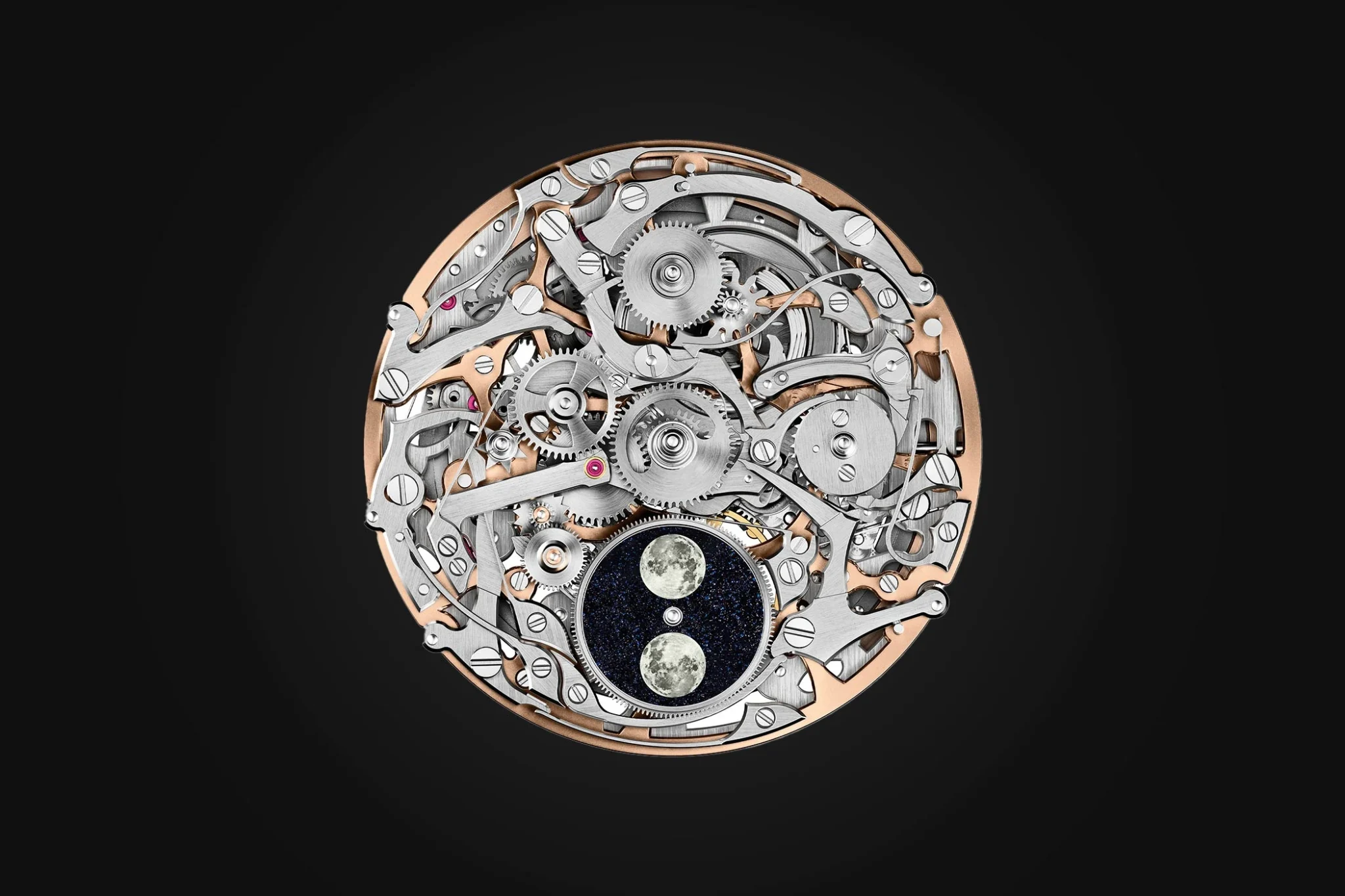
This calibre provided the basis for the calibre 5134, which was adapted to the 41 mm diameter in 2015. With its flat profile of 4.5 mm, it first appeared in the Royal Oak Ref. 26574 and finally marked a renaissance of perpetual calendars in the Royal Oak Ref. 26579CE in black ceramic. In 2019, an open-worked version followed with the automatic calibre 5135 movement, which has a week, weekday, date, month, leap year and moonphase display in addition to the hours and minutes. It made its first appearance as the drive for the Royal Oak Perpetual Calendar Squelette Ceramic (Ref. 26585CE) in black ceramic. As one of the few ceramic models with a ceramic caseback and due to its low production number, this model could even become a much sought-after collector piece, according to our editor Thomas Wojtowicz.
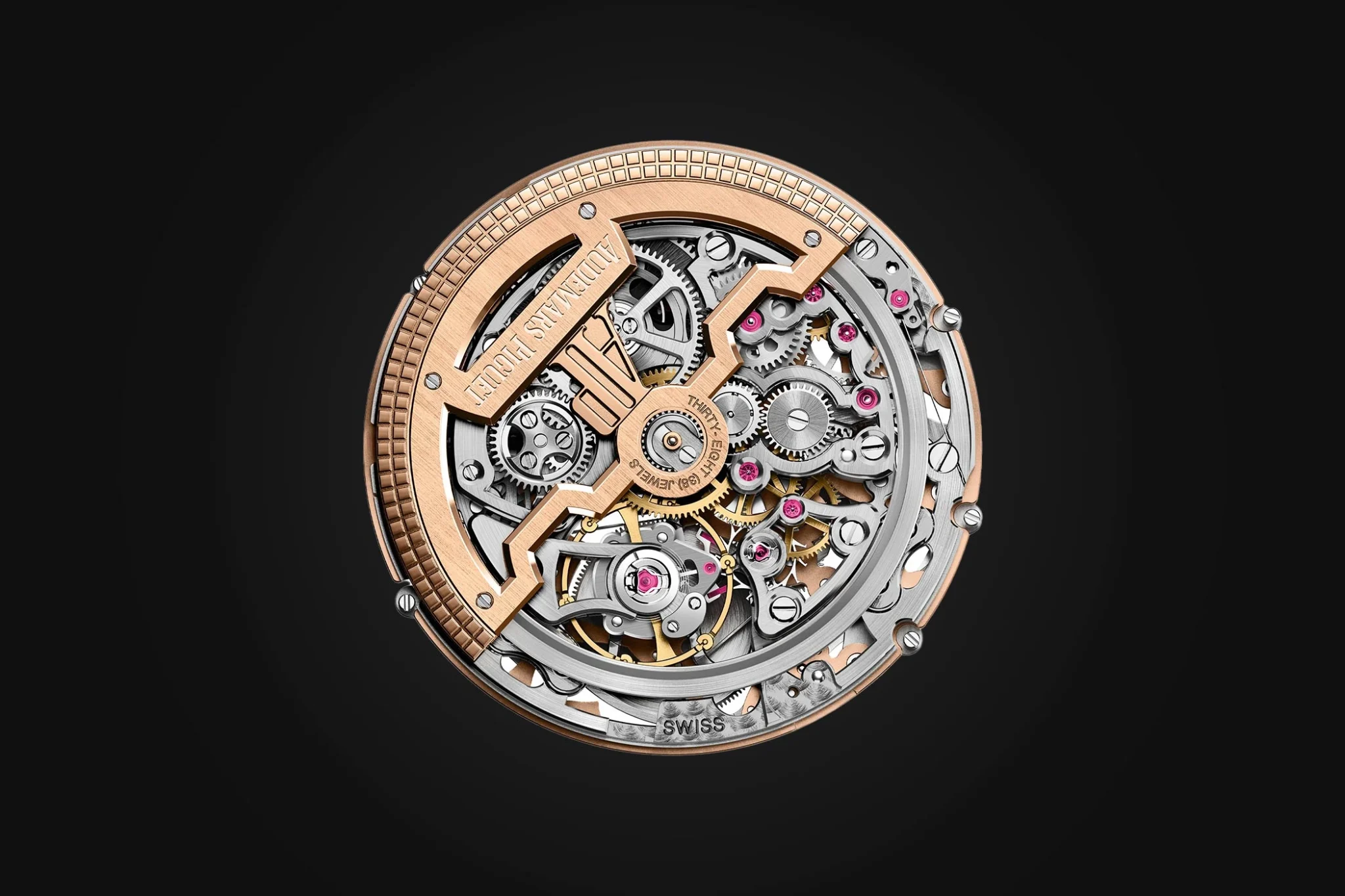
Following on from this movement’s appearance in various iterations, such as the Ref. 26585CM model in collaboration with Cactus Jack in 2023, the calibre with its skeletonised rotor with AP monogram can now be seen one last time in a timepiece. The movement oscillates at a frequency of 2.75 Hz and is equipped with a power reserve of 40 hours. The sophisticated complication automatically takes into account the number of days in the month when displaying the moonphase and displays the current date correctly even in leap years. The calibre perfectly reflects the Gregorian calendar up to the year 2100, meaning that only then should a manual correction be necessary.
150 timepieces for the 150th anniversary
To mark the 150th anniversary of the brand, no number is more symbolic than 150, which is why this open-worked special edition is limited to 150 pieces and numbered to mark the anniversary year. This is confirmed by engraved lettering on the caseback, which bears the ‘150’ logo and the words ‘1 of 150 pieces’. The limited-edition model is one of a series of new models through which Audemars Piguet is honouring its past while looking to the future. They are all linked by design elements specially developed for the anniversary. While the calibre 7138 in the Royal Oak and the Code 11.59 herald a new era of perpetual calendars, the Royal Oak Perpetual Calendar Squelette ‘150th Anniversary’ closes an important historic chapter for the horology house. As a final tribute to the calibre 5135, the model with the reference number 26585XT.OO.1220XT.01 is available for 221,100 euros.

